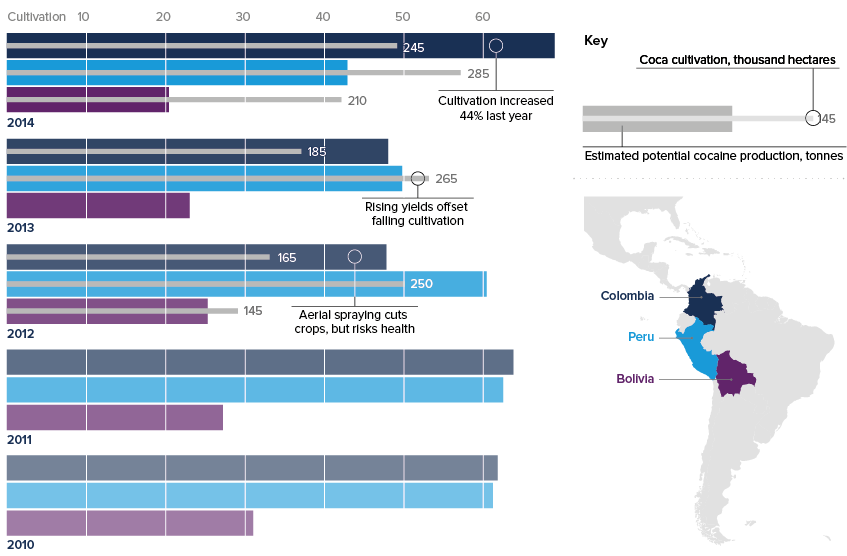Andean coca output unfazed by eradication efforts
UN data show Colombian coca cultivation soaring as Bolivia, Peru's fall

Source: UN Office on Drugs and Crime, US Office of National Drug Control Policy
Outlook
The lack of a solid state presence in much of both Colombia and Peru is an obstacle to further reducing coca planting, in particular given sustained cocaine demand in consumer countries and the lack of similarly lucrative alternatives for small producers.
A successful Colombia peace process could assist in this respect, but state weaknesses across the region that facilitate drug trafficking, the importance of coca for family incomes and rising yields in Peru, in particular, will make it difficult to make inroads into the trade.
Impacts
- Coca leaf accounts for 0.9% of Bolivia's GDP and 8.8% of its agriculture; rising prices could boost these figures.
- Higher coca yields suggest that Peru will not immediately lose its position as the world's leading cocaine producer.
- Bolivia's controlled (and partially legal) coca cultivation has limited acreage, but cocaine production is rising due to new technology
- Nearly 65,000 Colombian households are involved in coca cultivation, a number that is increasing along with average income.
See also
- Coca divergence will widen across Latin America - Aug 11, 2016
- Andean coca yields rise as planting declines - Jul 1, 2014
- More graphic analysis